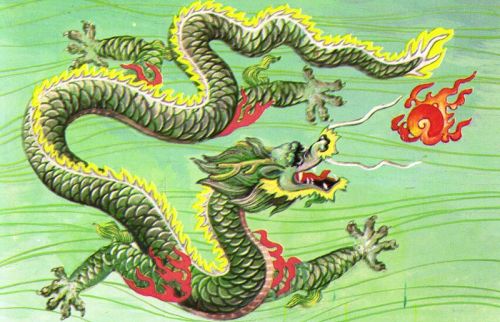Dragon in Vietnamese belief
VGP - The Dragon, in the Vietnamese belief system is a supernatural creature closely associated with Vietnamese people’s lives.
 |
In the Vietnamese culture, the dragon symbolizes the supreme power of the King. The dragon’s association with royalty is revealed by the names given to the king's personal effects and person.
The dragon tops the 4 sacred animals, followed by the unicorn, the, tortoise and phoenix. Every Vietnamese person knows the legend of Lạc Long Quân and Âu Cơ. Lạc Long Quân (King Dragon of the Lac Bird Clan) is known as the forefather of the Vietnamese people.
He is said to have been the son of a dragon, while his wife, Âu Cơ, was the child of a fairy. This is the origin of the Vietnamese proverb: "Con Rồng, cháu Tiên" or "Children of Dragon, Grandchildren of Fairies"
The dragon appears very early in the Đông Son culture. Carvings are found on Đông Son drums, depicting the Việt people’s tradition of worshiping cloud, rain, thunder and lightning to encourage bumper crops. The Dragon was the symbol of prosperity and power for Việt Nam’s feudal regimes. In the autumn 1010, King Lý Thái Tổ moved his capital from Hoa Lư in Ninh Bình province to Đại La.
Legend has it that when the royal barge landed at Đại La, the king saw a golden dragon rise into the sky. Taking this as a good omen, he named his new capital Thăng Long, Rising Dragon.
During the Ly dynasty from the 11th to the early 13th century, depictions of the dragon were both sophisticated and unique. The dragon's elaborate head is raised, flame-colored crest thrusts out, a jewel is held in its jaws. Its mane, ears and beard flutter gracefully behind, while its lithe, undulating body soars above the waves. Its perfectly rounded body curves lithely, in a long sinuous shape, tapering gradually to the tail. The body has 12 sections, symbolizing the 12 months of the year.
The dragon has an important place in Vietnam’s cultural life with dragon dances, dragon boat races, and children’s games of Dragon-Snake. Last year Vietnamese film makers featured a dragon in a 3-minute 3D movie, called “Viet Dragon” to mark the 1,000th anniversary of Thăng Long-Hà Nội. S-shaped Việt Nam itself shaped like a dragon.
“I’ve watched the movie, which features the Vietnamese dragon and it moved me. The scene where the dragon is flying against the sky and then slowly descends on Việt Nam reminds the audience about the country’s S shape. The head of the dragon lands on the north and its tail touches the southernmost province of Cà Mau.
The tail was depicted in a way that refers the audience to the 9 rivers in the Delta region, which is named Cửu Long or nine dragons. The dragon is closely associated with Việt Nam’s history and the belief that Vietnamese people are children of a Dragon father and Fairy mother,” said Vietnamese culture researcher and Professor Trần Văn Khê.

